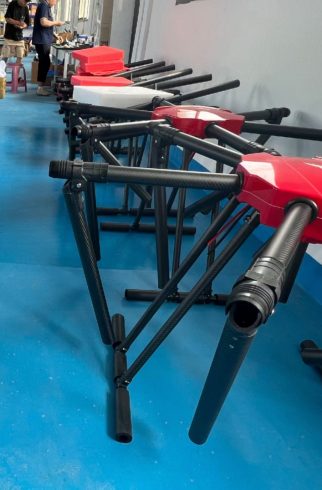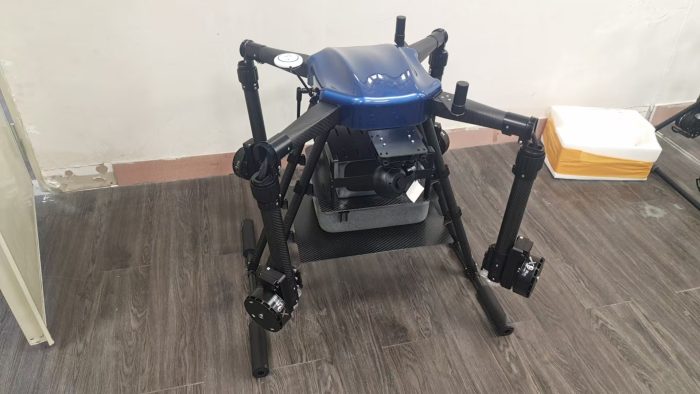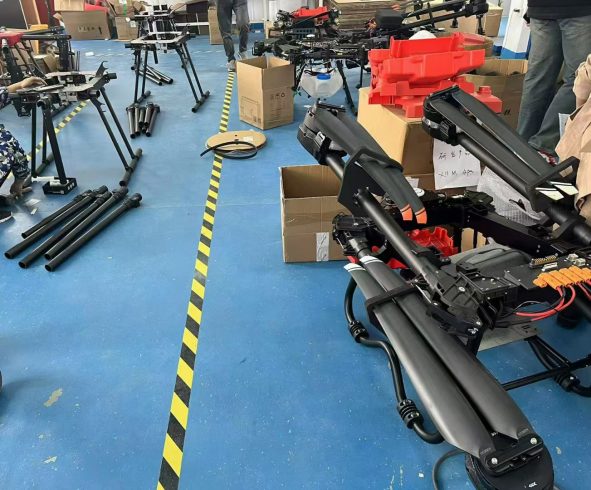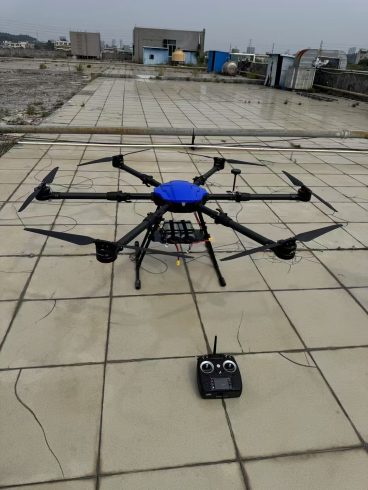![图片[1]-How to Increase Spray Efficiency with Drones: Strategies for Precision Agriculture-msoen](https://www.msoen.com/wp-content/uploads/2025/04/27fe7401e7184641-1024x768.jpg)
Agricultural drones are revolutionizing crop spraying, but their true potential lies in optimizing spray efficiency—delivering the right amount of chemicals to the right place with minimal waste. For farmers and agronomists, improving spray efficiency means lower costs, reduced environmental impact, and healthier crops. This article explores actionable strategies to maximize spray efficiency using drone technology, from advanced sensors to AI-driven workflows.
Why Spray Efficiency Matters
Traditional spraying methods waste 30–60% of chemicals due to drift, evaporation, or uneven coverage. Drones address this by offering:
- Precision: Targeted application reduces overuse.
- Adaptability: Real-time adjustments for weather and crop conditions.
- Data-Driven Insights: Analytics to refine future operations.
7 Strategies to Boost Spray Efficiency with Drones
- Optimize Flight Paths with AI
- AI Route Planning: Machine learning algorithms analyze field maps, wind patterns, and obstacles to design the shortest, most efficient flight paths.
- Swarm Coordination: Deploy multiple drones to divide large fields into zones, avoiding overlaps and gaps.
- Terrain Following: LiDAR or ultrasonic sensors adjust altitude automatically for sloped or uneven terrain.
Efficiency Gain: Reduces flight time by 20–30% and chemical waste by 15%.
- Use Variable Rate Technology (VRT)
- Zone-Specific Spraying: Divide fields into zones using NDVI (crop health) or soil maps. Program drones to apply higher rates in high-risk pest/disease areas and lower rates elsewhere.
- Real-Time Adjustments: Multispectral cameras detect plant stress mid-flight, triggering dynamic rate changes.
Efficiency Gain: Cuts chemical use by 25–50%.
- Select the Right Nozzles
- Anti-Drift Nozzles: Air induction nozzles produce larger droplets (400–600 microns) to minimize wind drift.
- Adjustable Droplet Sizes: Rotary disc nozzles vary droplet size (50–500 microns) based on canopy density.
- Pulsed Spraying: Release chemicals only when the drone is directly over target areas.
Efficiency Gain: Reduces drift by up to 90%.
- Leverage Real-Time Environmental Sensors
- Wind Speed/Direction: Onboard anemometers adjust nozzle angles or pause spraying during gusts.
- Humidity/Temperature: Avoid spraying in high heat (>35°C) or low humidity (<40%) to reduce evaporation.
- Rain Prediction: Halt operations if rainfall is imminent within 30 minutes.
Efficiency Gain: Improves chemical adhesion by 30–40%.
- Implement Ultra-Low Volume (ULV) Spraying
- Micro-Droplet Technology: Apply concentrated chemicals in ultra-fine droplets (50–150 microns) for uniform coverage with 70% less water.
- Electrostatic Charging: Charge droplets to attract them to plant surfaces, enhancing adhesion.
Efficiency Gain: Saves 60–80% of water and carrier chemicals.
- Integrate Pre- and Post-Spray Analytics
- Pre-Spray Scouting: Use drones with multispectral cameras to identify pest hotspots, nutrient deficiencies, or disease outbreaks.
- Post-Spray Audits: Analyze droplet distribution maps to identify under-dosed areas and adjust future flights.
- Historical Data: Compare spray records with yield maps to refine chemical rates seasonally.
Efficiency Gain: Increases yield by 10–20% through data-driven adjustments.
- Maintain Equipment Proactively
- Nozzle Cleaning: Flush tanks and nozzles after each use to prevent clogs and uneven spray patterns.
- Battery Management: Use swappable batteries to avoid downtime; monitor health via IoT sensors.
- Software Updates: Regularly update drone firmware and AI models for improved performance.
Efficiency Gain: Extends equipment lifespan and ensures consistent spray quality.
Case Study: Efficiency Wins in Midwest Corn Fields
A 1,000-acre corn farm in Iowa adopted AI-driven drone spraying with variable rate technology. Results:
- 40% Less Herbicide: Targeted weed zones reduced chemical costs by $18,000/year.
- 15% Fuel Savings: Optimized flight paths shortened total flight distance by 120 miles/week.
- Zero Drift Incidents: Air induction nozzles and wind sensors eliminated chemical drift to neighboring organic fields.
Future Technologies to Watch
- Autonomous Charging Stations: Drones auto-dock for battery swaps and refills, enabling 24/7 operations.
- AI-Powered Predictive Spraying: Forecast pest outbreaks days in advance using weather and historical data.
- Blockchain Traceability: Securely log spray data for sustainability certifications and audits.
Conclusion
Increasing spray efficiency with drones isn’t just about adopting technology—it’s about integrating smart workflows, precise hardware, and data analytics into every operation. By optimizing flight paths, leveraging real-time sensors, and maintaining equipment, farmers can slash costs, meet sustainability goals, and achieve higher yields. As AI and automation evolve, drone spray efficiency will set the new standard for competitive, eco-conscious agriculture.
The future of farming is precise, efficient, and airborne












暂无评论内容